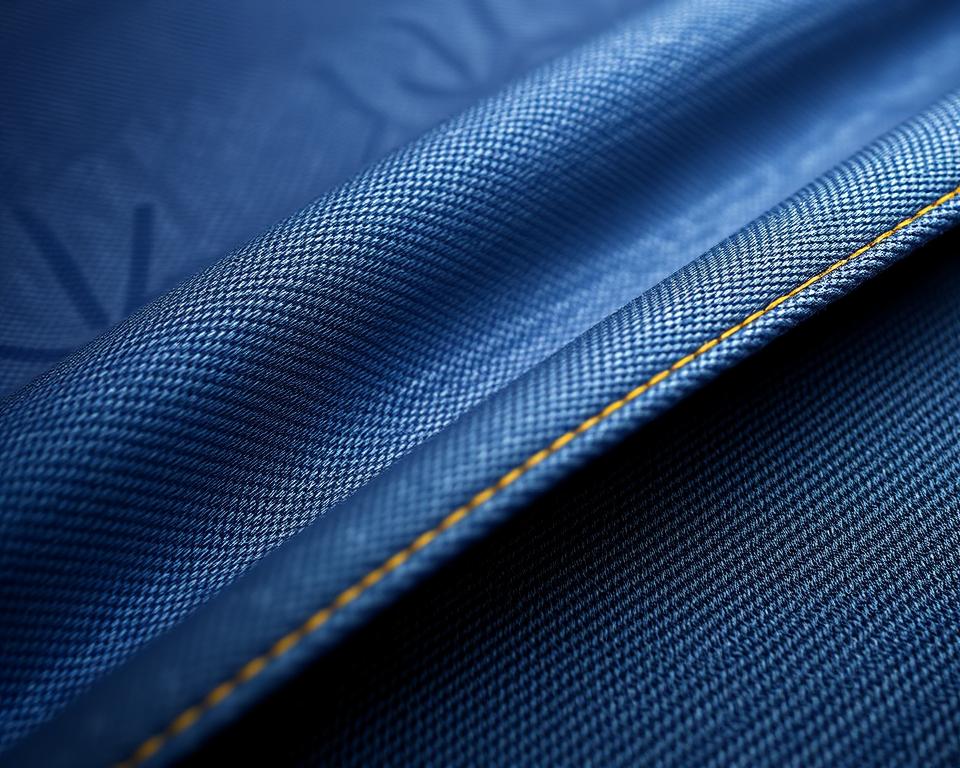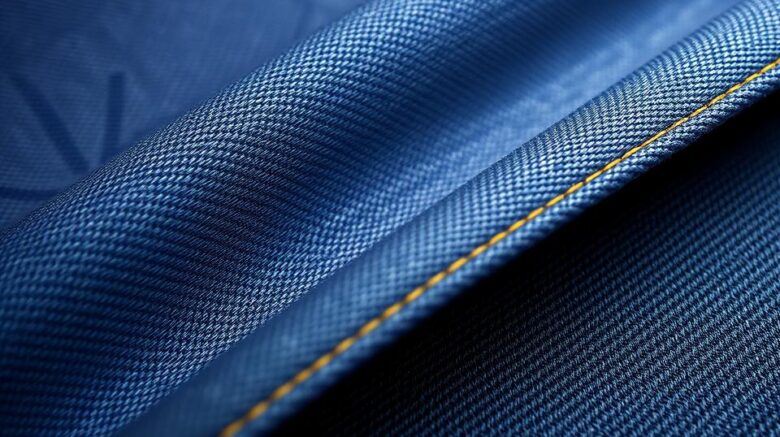Your Manual to Premium denim Edge-to-Edge Fabric
Have you ever wondered the reason certain jeans seem as though they are built for endurance the ages? It’s all about the materials and artistry. Consider the growing trend of superior selvedge. This goes beyond common textile—it’s a testament to excellence and tradition.
Currently, increasingly more individuals are opting for these classic textiles for their sturdiness and iconic ewingfly denim charm. Whether you’re a do-it-yourself sewist or a denim lover, there’s an exceptional aspect about using high-quality natural fiber and thread. It’s not just about creating jeans; it’s about producing a narrative.
Here at Core Fabrics, we’ve selected a range of 14.25oz organic cotton and flexible variants. These fabrics are perfect for a spectrum ranging from raw trousers to couture jacket designs. Ready to explore the universe of top-tier fabrics? Let’s jump right in.
Defining Denim Selvedge Fabric?
What makes certain trousers stand out with their unique, naturally edged borders? The answer is found in the selvedge denim, a premium fabric known for its robustness and retro appeal. In contrast to regular textiles, such material is fashioned using classic methods that have endured through ages.
What Selvedge Denim Means
Selvedge denim is produced via retro shuttle looms, which generate narrow widths of about 30-35 inches. These looms weave the fabric in a method that delivers self-finished edges, often accented with a characteristic red line. This process ensures the fabric is firmly crafted and exceptionally sturdy.
Modern looms, in contrast, produce expansive fabric but lack the equivalent of craftsmanship. The imperfections in selvedge, like misaligned seams or uneven textures, are celebrated as part of its charm. This ideology, termed “wabi-sabi”, honors the appeal of natural flaws.
Production of Selvedge Denim
The production of selvedge denim requires a meticulous process. Traditional shuttle looms interlace the horizontal threads back and forth, resulting in a thick and sturdy textile. This process stands in contrast with modern looms, which emphasize speed and efficiency over quality.
Brands like Karson Denim maintain time-honored Japanese craft practices from the 1990s. They deliberately incorporate anomalies to retain the authenticity of the textile. All products is assessed on a four-point system, guaranteeing it fulfills the top criteria of superiority.
| Feature | Selvedge Denim | Modern Denim |
|---|---|---|
| Width | 30-35 inches | 60+ inches |
| Weaving Process | Shuttle Loom | Contemporary Loom |
| Finish | Uneven, Imperfect | Even |
| Durability | Exceptional | Standard |
“The charm of selvedge is found in its flaws—each irregularity speaks of artistry and heritage.”
The History of Selvedge Denim
Starting from modest origins to worldwide renown, the tale of these fabrics is vibrant and inspiring. What started as rugged attire in seventeenth-century France transformed into a signifier of classic elegance and craftsmanship.
Historical Roots
The foundation of this fabric dates back to Nîmes, France, where it was dubbed “serge de Nîmes.” Initially created for workers, it was constructed with hardwearing cotton and yarn. Its strength ensured its popularity among workers during the historic Gold Rush.
During the twentieth century, it had become a cornerstone for pants. The ending of the Cone Mills White Oak facility became a pivotal moment. This shift paved the way for Japanese artisans to restore traditional weaving techniques.

Evolution in Modern Denim Production
Post-WWII, Japan adopted old-school American culture. Craftsmen repaired old looms to produce genuine reproductions. This devotion to quality ensured the perseverance of selvedge as a unique product.
Currently, breakthroughs from Italy and Turkey have brought forth sustainable mixtures and elastic selections. These improvements have expanded the attraction of this timeless fabric. Within Core Fabrics, we procure internationally, from Montréal to Asia, to bring you the finest standards.
“The legacy of selvedge is a testament to the lasting worth of craftsmanship and legacy.”
Reasons to Select Selvedge Denim?
What makes selvedge denim shine in the realm of premium fabrics? Its distinct attributes and incomparable robustness have made it beloved among lovers and stylists alike. Whether you’re making trousers or a structured jacket, this textile delivers a fusion of classic methods and modern appeal.
Unique Qualities of Selvedge Fabric
Selvedge denim is celebrated for its tight weave, which boosts durability and wear patterns. In contrast to common fabrics, denim selvedge fabric is crafted using traditional shuttle looms, creating a tightly packed and extra robust product. Such a process guarantees that every item possesses a singular finish and character.
Here’s what makes it special:
- Hairy, rigid raw denim contrasts with pre-washed comfort stretches.
- The sanforization process ensures predictable sizing, while natural variants entail a unique shrinkage journey.
- Variants include 9.5oz Eco Finish to 14.25oz Organic, suited for varied requirements.
Robustness and Endurance
One of the key attributes of selvedge denim is its longevity. The firm interlacing boosts robustness while enabling characteristic wear patterns over time. This establishes it as a wise purchase for those seeking enduring style.
Main considerations:
- Mid-weight fabrics from 12oz to 14oz work well for tailored jackets and evolving jeans.
- The 14.25oz True Indigo option is highly favored for enduring jeans.
- Sustainable variants such as recycled cotton combined with indigo blends enhance eco-friendliness.
At Core Fabrics, our collection includes a variety of options to suit your needs. Spanning from raw finishes to sanforized treatments, each selection is designed for superior quality and value.
Selvedge Denim vs. Wide Denim
When it comes to crafting long-lasting and trendy pieces, the selection of material plays a crucial role. Two popular options are selvedge and wide denim, each with unique characteristics. Understanding their differences can help you choose the best option for your endeavor.
Distinct Weaving Methods
Selvedge denim is crafted with traditional shuttle looms, producing limited spans of 30-35 inches. This herringbone denim material process forms tightly woven edges, often marked by a signature red line. In contrast, wide denim is produced using modern projectile looms, yielding spans of 60+ inches.
Traditional shuttle looms operate at approximately 3 meters per minute, while contemporary projectile looms achieve up to 30m per minute. Such speed differences influence both the expense and the finish of the outcome.
Advantages and Disadvantages
Selvedge denim is known for its premium quality and durability. Its slender dimension suits it well for creations where exposed edges or decorative patches are required. However, it can be more expensive, averaging $23 per meter.
Wide denim is more cost-effective, typically costing $8 per half-meter. Its broader span cuts down on scrap, making it suitable for big-scale works like furniture covering. However, it does not feature the unique edge finish of selvedge.
| Attribute | Selvedge Denim | Wide Denim |
|---|---|---|
| Span | 30-35 inches | 60+ inches |
| Weaving Process | Traditional Shuttle | Projectile Loom |
| Production Speed | 3m per minute | 30m per minute |
| Cost | $23/meter | $8/half-meter |
For structured edges, like those needed in Grainline Thayer jackets, selvedge is the preferred choice. For larger projects, wide denim offers better value and efficiency. Consider your project needs to make the best decision.
How to Use Selvedge Denim
Working with premium materials can elevate your sewing projects to the next level. Whether you’re crafting jeans, blazers, or frocks, grasping fabric quantities, proper sewing methods, and maintenance guarantees a polished result. Let’s delve into ways to best utilize this everlasting textile.
Yardage Needed for Jeans and Jackets
It is essential to compute the correct fabric amount when designing your creation. For men’s jeans, you’ll need about 3-3.3 yards, accounting for potential defects and shrinkage. Trucker jackets typically require 3.3 yards, while skirts require only 2 yards.
Innovative layout techniques can mitigate fabric flaws. Rather than avoiding imperfections, incorporate them into your pattern for distinctive style.
| Project | Yardage Needed |
|---|---|
| Male Jeans | 3–3.3 yards |
| Work Jacket | 3.3 yards |
| Dress | 2 yards |
Sewing Techniques and Maintenance
Employing proper equipment and methods leads to an impeccable finish. Choose #70-110 needles and presser foot attachments made for robust textiles. Gütermann rPET thread works well for contrasting stitches.
Additional advice includes:
- A tailor’s clapper helps deliver defined creases without unwanted shine.
- Core Fabrics’ denim kits include topstitch thread, rivets, and 9mm jeans buttons for a professional finish.
- When sturdy borders are needed, such as in jackets, selvedge is optimal.
Maintaining your pieces properly increases their longevity. Limit washing and allow to air dry for optimal durability. Following these guidelines guarantees enduring results.
In Summary
Using superior fabrics goes beyond mere durability—it’s about instilling personality. Selvedge denim embodies this ideology, merging artisanal charm with long-lasting quality. Be it crafting jeans or tailoring a refined jacket, each stitch narrates a tale.
Core Fabrics simplifies your creative journey. Our swatch service lets you touch and test the fabric before deciding. Additionally, benefit from complimentary shipping on orders exceeding $150 USD throughout North America.
Future trends in cotton textiles include sustainable blends and retro washes. They open fresh avenues for merging sustainability with chic style.
Prepared to immerse yourself in superior fabrics? Shop now and discover the value of crafting with purpose. Your future project might just be that lasting masterpiece.
